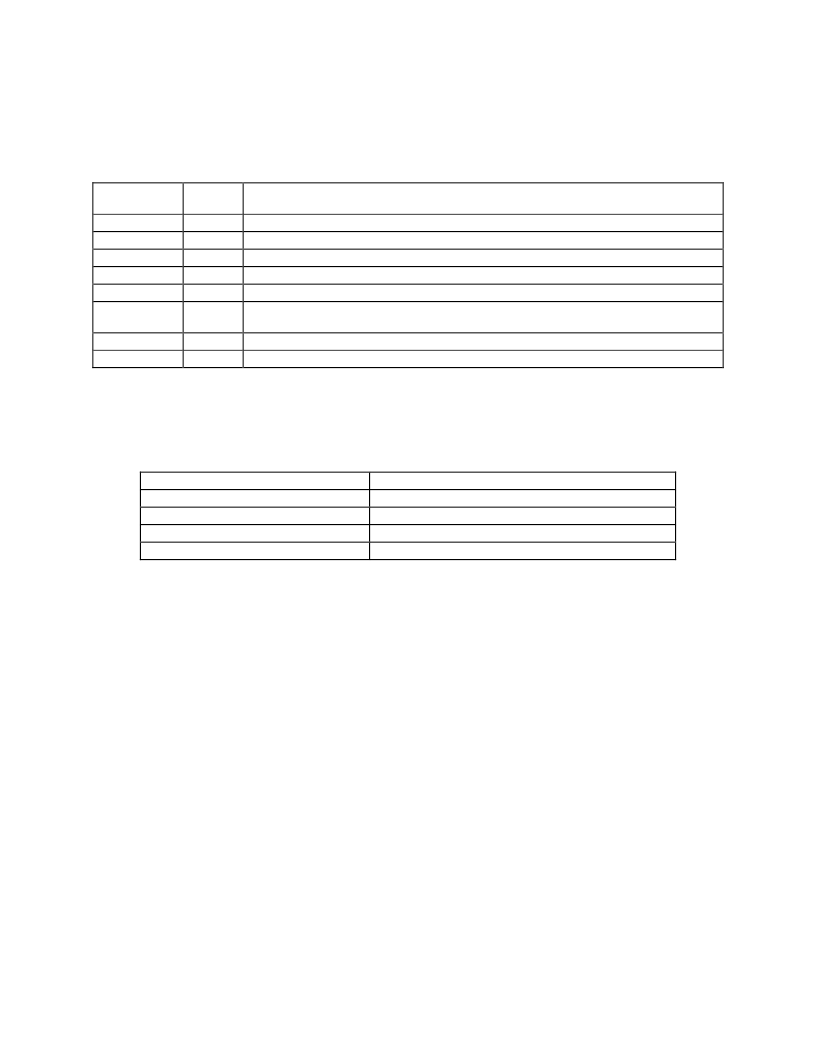- 您現(xiàn)在的位置:買賣IC網(wǎng) > PDF目錄358934 > LPC47N217 (SMSC Corporation) 64 - PIN SUPUR I/O WITH LPC INTERFACE PDF資料下載
參數(shù)資料
| 型號: | LPC47N217 |
| 廠商: | SMSC Corporation |
| 英文描述: | 64 - PIN SUPUR I/O WITH LPC INTERFACE |
| 中文描述: | 64 -針蘇布爾的I / LPC接口? |
| 文件頁數(shù): | 28/228頁 |
| 文件大?。?/td> | 1269K |
| 代理商: | LPC47N217 |
第1頁第2頁第3頁第4頁第5頁第6頁第7頁第8頁第9頁第10頁第11頁第12頁第13頁第14頁第15頁第16頁第17頁第18頁第19頁第20頁第21頁第22頁第23頁第24頁第25頁第26頁第27頁當(dāng)前第28頁第29頁第30頁第31頁第32頁第33頁第34頁第35頁第36頁第37頁第38頁第39頁第40頁第41頁第42頁第43頁第44頁第45頁第46頁第47頁第48頁第49頁第50頁第51頁第52頁第53頁第54頁第55頁第56頁第57頁第58頁第59頁第60頁第61頁第62頁第63頁第64頁第65頁第66頁第67頁第68頁第69頁第70頁第71頁第72頁第73頁第74頁第75頁第76頁第77頁第78頁第79頁第80頁第81頁第82頁第83頁第84頁第85頁第86頁第87頁第88頁第89頁第90頁第91頁第92頁第93頁第94頁第95頁第96頁第97頁第98頁第99頁第100頁第101頁第102頁第103頁第104頁第105頁第106頁第107頁第108頁第109頁第110頁第111頁第112頁第113頁第114頁第115頁第116頁第117頁第118頁第119頁第120頁第121頁第122頁第123頁第124頁第125頁第126頁第127頁第128頁第129頁第130頁第131頁第132頁第133頁第134頁第135頁第136頁第137頁第138頁第139頁第140頁第141頁第142頁第143頁第144頁第145頁第146頁第147頁第148頁第149頁第150頁第151頁第152頁第153頁第154頁第155頁第156頁第157頁第158頁第159頁第160頁第161頁第162頁第163頁第164頁第165頁第166頁第167頁第168頁第169頁第170頁第171頁第172頁第173頁第174頁第175頁第176頁第177頁第178頁第179頁第180頁第181頁第182頁第183頁第184頁第185頁第186頁第187頁第188頁第189頁第190頁第191頁第192頁第193頁第194頁第195頁第196頁第197頁第198頁第199頁第200頁第201頁第202頁第203頁第204頁第205頁第206頁第207頁第208頁第209頁第210頁第211頁第212頁第213頁第214頁第215頁第216頁第217頁第218頁第219頁第220頁第221頁第222頁第223頁第224頁第225頁第226頁第227頁第228頁

7.3 LPC Interface
SMSC DS – LPC47M192
Page 28
Rev. 03/30/05
DATASHEET
The following sub-sections specify the implementation of the LPC bus.
7.3.1 LPC INTERFACE SIGNAL DEFINITION
The signals required for the LPC bus interface are described in the table below. LPC bus signals use PCI
33MHz electrical signal characteristics.
SIGNAL
NAME
LAD[3:0]
I/O
LPC address/data bus. Multiplexed command, address and data bus.
LFRAME#
Input
Frame signal. Indicates start of new cycle and termination of broken cycle
PCI_RESET#
Input
PCI Reset. Used as LPC Interface Reset.
LDRQ#
Output
Encoded DMA/Bus Master request for the LPC interface.
nIO_PME
OD
Power Mgt Event signal. Allows the LPC47M192 to request wakeup.
Powerdown Signal. Indicates that the LPC47M192 should prepare for power to be shut
on the LPC interface.
SER_IRQ
I/O
Serial IRQ.
PCI_CLK
Input
PCI Clock.
Note
: The CLKRUN# signal is not implemented in this part.
7.3.2 LPC CYCLES
The following cycle types are supported by the LPC protocol.
CYCLE TYPE
I/O Write
1 Byte
I/O Read
1 Byte
DMA Write
1 Byte
DMA Read
1 Byte
LPC47M192 ignores cycles that it does not support.
7.3.3 FIELD DEFINITIONS
The data transfers are based on specific fields that are used in various combinations, depending on the cycle
type. These fields are driven onto the LAD[3:0] signal lines to communicate address, control and data
information over the LPC bus between the host and the LPC47M192. See the
Low Pin Count (LPC) Interface
Specification
Revision 1.0 from Intel, Section 4.2 for definition of these fields.
7.3.4 LFRAME# USAGE
LFRAME# is used by the host to indicate the start of cycles and the termination of cycles due to an abort or
time-out condition. This signal is to be used by the LPC47M192 to know when to monitor the bus for a cycle.
This signal is used as a general notification that the LAD[3:0] lines contain information relative to the start or
stop of a cycle, and that the LPC47M192 monitors the bus to determine whether the cycle is intended for it.
The use of LFRAME# allows the LPC47M192 to enter a lower power state internally. There is no need for the
LPC47M192 to monitor the bus when it is inactive, so it can decouple its state machines from the bus, and
internally gate its clocks.
When the LPC47M192 samples LFRAME# active, it immediately stops driving the LAD[3:0] signal lines on the
next clock and monitor the bus for new cycle information.
The LFRAME# signal functions as described in the Low Pin Count (LPC) Interface Specification, Revision 1.0.
TYPE
DESCRIPTION
LPCPD#
Input
TRANSFER SIZE
相關(guān)PDF資料 |
PDF描述 |
|---|---|
| LPC47N217-JN | 64 - PIN SUPUR I/O WITH LPC INTERFACE |
| LPC47N217-JV | 64 - PIN SUPUR I/O WITH LPC INTERFACE |
| LPC47N227 | 100 Pin Super I/O with LPC Interface for Notebook Applications |
| LPC47M172 | ADVANCED I/O CONTROLLER WITH MOTHERBOARD GLUE LOGIC |
| LPC47N252 | Advanced Notebook I/O Controller with On-Board FLASH |
相關(guān)代理商/技術(shù)參數(shù) |
參數(shù)描述 |
|---|---|
| LPC47N217_07 | 制造商:SMSC 制造商全稱:SMSC 功能描述:64-Pin Super I/O with LPC Interface |
| LPC47N217-JN | 制造商:Rochester Electronics LLC 功能描述:64STQFP - Bulk |
| LPC47N217-JV | 功能描述:輸入/輸出控制器接口集成電路 64-Pin Mobile I/O RoHS:否 制造商:Silicon Labs 產(chǎn)品: 輸入/輸出端數(shù)量: 工作電源電壓: 最大工作溫度:+ 85 C 最小工作溫度:- 40 C 安裝風(fēng)格:SMD/SMT 封裝 / 箱體:QFN-64 封裝:Tray |
| LPC47N217N | 制造商:SMSC 制造商全稱:SMSC 功能描述:64-Pin Super I/O with LPC Interface |
| LPC47N217N-ABZJ | 功能描述:輸入/輸出控制器接口集成電路 3.3volts 5V tolerant RoHS:否 制造商:Silicon Labs 產(chǎn)品: 輸入/輸出端數(shù)量: 工作電源電壓: 最大工作溫度:+ 85 C 最小工作溫度:- 40 C 安裝風(fēng)格:SMD/SMT 封裝 / 箱體:QFN-64 封裝:Tray |
發(fā)布緊急采購,3分鐘左右您將得到回復(fù)。